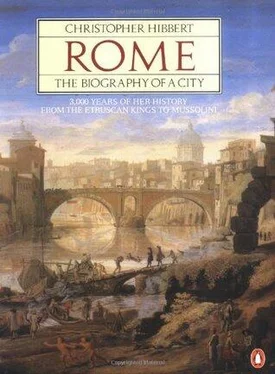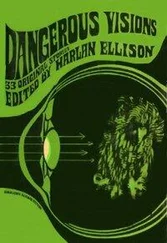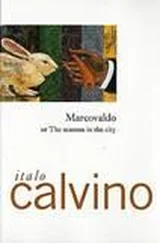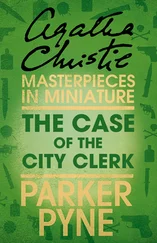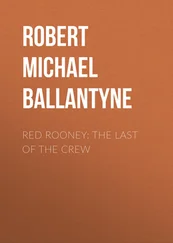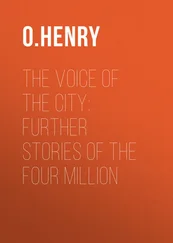Christopher Hibbert - Rome. The Biography of the City
Здесь есть возможность читать онлайн «Christopher Hibbert - Rome. The Biography of the City» весь текст электронной книги совершенно бесплатно (целиком полную версию без сокращений). В некоторых случаях можно слушать аудио, скачать через торрент в формате fb2 и присутствует краткое содержание. Жанр: Культурология, Искусство и Дизайн, на английском языке. Описание произведения, (предисловие) а так же отзывы посетителей доступны на портале библиотеки ЛибКат.
- Название:Rome. The Biography of the City
- Автор:
- Жанр:
- Год:неизвестен
- ISBN:нет данных
- Рейтинг книги:3 / 5. Голосов: 1
-
Избранное:Добавить в избранное
- Отзывы:
-
Ваша оценка:
- 60
- 1
- 2
- 3
- 4
- 5
Rome. The Biography of the City: краткое содержание, описание и аннотация
Предлагаем к чтению аннотацию, описание, краткое содержание или предисловие (зависит от того, что написал сам автор книги «Rome. The Biography of the City»). Если вы не нашли необходимую информацию о книге — напишите в комментариях, мы постараемся отыскать её.
Rome. The Biography of the City — читать онлайн бесплатно полную книгу (весь текст) целиком
Ниже представлен текст книги, разбитый по страницам. Система сохранения места последней прочитанной страницы, позволяет с удобством читать онлайн бесплатно книгу «Rome. The Biography of the City», без необходимости каждый раз заново искать на чём Вы остановились. Поставьте закладку, и сможете в любой момент перейти на страницу, на которой закончили чтение.
Интервал:
Закладка:
3. The PALAZZO DELLA CANCELLERIA, perhaps the most beautiful of all Roman palaces, was begun in 1483 and completed after several interruptions in 1517. The design of the palace has often been attributed to Bramante who, however, did not arrive in Rome until 1499 when the building of the palace was well advanced. He may have been responsible for a part of it but the latest opinion is that the original design was by Andrea Bregno. The palace was confiscated from the Riario family by the Medici Pope Leo X (1513–21), who installed in it the offices of the papal chancellery, hence the name Cancelleria . The palace later on became the headquarters of the Tribune of the Roman Republic of 1798–9, and of Napoleon's court in 1810. It also housed the first Roman Parliament in 1848. As he entered the building on 16 November of that year Pio Nono's Prime Minister, Pellegrino Rossi, was murdered.
4. Situated in the Via delle Terme di Caracalla, the church of SS. NEREO E ACHILLEO is one of Rome's titular churches. It was also one of the city's diaconiae . First mentioned in 337, it was restored by Pope Leo III (795–816) and almost entirely rebuilt by Sixtus IV in the fifteenth century. It was completely redecorated when assigned as a titular church to the famous Oratorian scholar and historian, Cardinal Baronius, in 1597. The mosaic on the arch over the sanctuary representing the Transfiguration is of the time of Pope Leo III. SS. Nereus and Achilleus were, according to Pope Damasus, two soldiers of the Roman army who, on becoming Christians, refused further service and were consequently martyred, probably during the persecutions of Domitian.
5. Standing just inside the PORTA DEL POPOLO, the church of S. MARIA DEL POPOLO was built as a chapel by Pope Paschal II in 1099. Enlarged as a parish church at the expense of the Roman people – hence the name – it was rebuilt by Sixtus IV in 1474 to the designs of Baccio Pontelli and Andrea Bregno. The side of the church along the piazza has been encased in a neo-classical shell, but the façade still retains its simple early Renaissance elegance. The church contains numerous fine works of art, several commissioned by Sixtus IV himself and other members of the della Rovere family. The most celebrated paintings are those by Pinturicchio in the della Rovere family chapel and those by Caravaggio in the small chapel to the left of the main altar. Other artists whose works are to be seen in the church are Raphael, Sebastiano del Piombo, Sansovino, Bernini and Carlo Maratta. The celebrated thirteenth-century icon of the Madonna on the high altar is traditionally attributed to St Luke. The stained-glass window of 1509 in the main chapel (which was extended for Pope Julius II by Bramante) is by Guillaume de Marcillat. Sansovino's splendid tombs of Cardinals Guillaume della Rovere and Ascanio Sforza behind the altar were commissioned by Julius II. The cardinals, recumbent above beautiful reliefs inspired by classical models, are represented as though asleep rather than lying in state as had formerly been the custom.
6. Attributed by some, though without conclusive evidence, to Baccio Pontelli, the church of S. MARIA DELLA PACE was built by Sixtus IV in about 1480 as a thank-offering for the conclusion of his war with Florence which started after the Pazzi conspiracy. The semicircular portico and the convex Baroque façade were added by Pietro da Cortona for Pope Alexander VII in 1656. Attached to the church is an almost perfect classical Roman cloister, Bramante's first building in Rome. Inside are Raphael's famous frescos of the Sybils of Cuma, Persia, Phrygia and Tibur, painted in 1514.
7. The PONTE SISTO spans the Tiber above the Isola Tiberina at the beginning of a straight stretch of river enclosed by the Lungotevere della Farnesina on the right bank and the Lungotevere dei Tebaldi on the left. Designed by Baccio Pontelli, it was built to replace a Roman bridge of Marcus Aurelius (see note 15, Chapter 4) which had been destroyed in 792. It was completed in 1474. This was more than a thousand years after the last imperial bridge had been thrown across the Tiber. The bridge, which commands a view of ineffable beauty, bears on the parapet the inscription: ‘You who pass by here offer a prayer to God so that Sixtus IV, excellent Pontifex Maximus, may be healthy and for long so preserved. Any of you, whoever you are, to whom this request is made, be healthy too.’
8. Intended as a papal chapel for ecclesiastical ceremonies of a semi-public character, the SISTINE CHAPEL was consecrated by Sixtus IV on 15 August 1483. It is in the shape of a parallelogram, 132 feet by 45 feet. The walls on either side are unbroken for two thirds of their height, the windows throwing their light from above. Along each side wall is a set of frescos representing scenes from the life of Moses on the left side and from the life of Christ on the right. These were all painted from 1481 to 1483. In 1506 Pope Julius II called on Michelangelo to fresco the ceiling which till then had been decorated only with a painted blue sky studded with golden stars From 10 May 1508 to 31 October 1512 the sculptor turned painter worked unremittingly. In 1534, Pope Clement VII persuaded Michelangelo to complete the decoration by painting a gigantic fresco to cover the whole of the great unbroken wall behind the high altar. The subject chosen was the Last Judgement.
9. The SAPIENZA had been re-established by Pope Eugenius IV (1431–47) on the present site of the Palazzo della Sapienza, whose façade conceals Borromini's church of S. IVO. It remained the headquarters of the university until the construction by Mussolini of the University City near San Lorenzo fuori le Mura from 1932 to 1935. The Sapienza was then taken over by the State Archives. The existing building is the work of Giacomo della Porta. Beyond the simple, rather severe façade lies a magnificent courtyard, with a portico and loggias on either side, bounded at the far end by Borromini's tour de force – the church of S. Ivo, built between 1642 and 1660 for the Barberini Pope Urban VIII, the ground plan being derived from the shape of the Barberini family's heraldic bee. The altarpiece, begun by Cortona in 1661, was completed by G. V. Borghesi after 1674. The church was dedicated by the lawyers of the Papal Consistory (the court at which papal business was conducted) to their patron, St Ivo of Chartres.
The GREGORIAN UNIVERSITY, the pontifical university of Rome in Piazza della Pilotta, and its associated Biblical and Oriental Institutes, originated in the Roman College which was founded in 1551 by Ignatius Loyola as a training ground for laymen as well as priests and missionaries. This attracted so many pupils that it was moved to larger premises in a house belonging to the Frangipani family near the Church of S. Stefano del Cacco, and then to an even larger house of the Salviati near S. MARIA IN VIALATA. The present university building is by Giulio Barluzzi (1927–30).
10. Built by Domenico Riario and later occupied by Girolamo Riario and his wife, Caterina Sforza, the RIARIO PALACE was renowned for its lovely garden. The property was acquired in the early eighteenth century by the Corsini family who commissioned Ferdinando Fuga to rebuild the palace as the PALAZZO CORSINI (1732–6). In 1797, Joseph Bonaparte moved into the palace as ambassador of the French Directory. It was acquired by the Italian State in 1884 and housed the art collection of the Corsinis which had been gradually expanded and has now been transferred to the PALAZZO BARBERINI. Another RIARIO PALACE, attributed to Baldassare Peruzzi, was built from 1536 near the church of s. APOLLINARE which was founded by Pope Hadrian in 780 and remodelled by Ferdinando Fuga during the pontificate of Benedict XIV (1740–58). The palace was rebuilt by Martino Longhi the elder about 1580 for the Milanese Cardinal Marco Sittico Altemps of the Italian branch of the von Hohenems family. It is now the PALAZZO ALTEMPS and a Spanish seminary.
Читать дальшеИнтервал:
Закладка:
Похожие книги на «Rome. The Biography of the City»
Представляем Вашему вниманию похожие книги на «Rome. The Biography of the City» списком для выбора. Мы отобрали схожую по названию и смыслу литературу в надежде предоставить читателям больше вариантов отыскать новые, интересные, ещё непрочитанные произведения.
Обсуждение, отзывы о книге «Rome. The Biography of the City» и просто собственные мнения читателей. Оставьте ваши комментарии, напишите, что Вы думаете о произведении, его смысле или главных героях. Укажите что конкретно понравилось, а что нет, и почему Вы так считаете.
